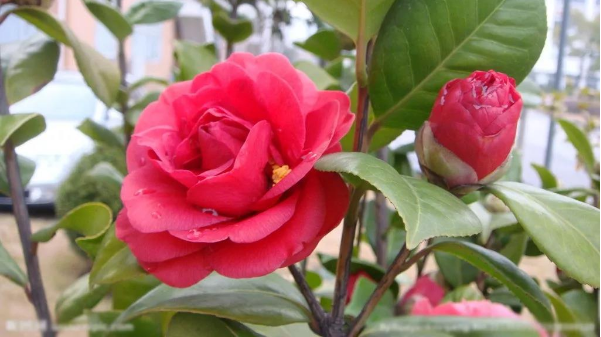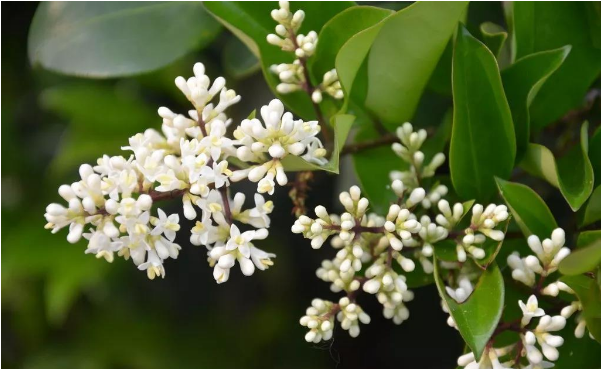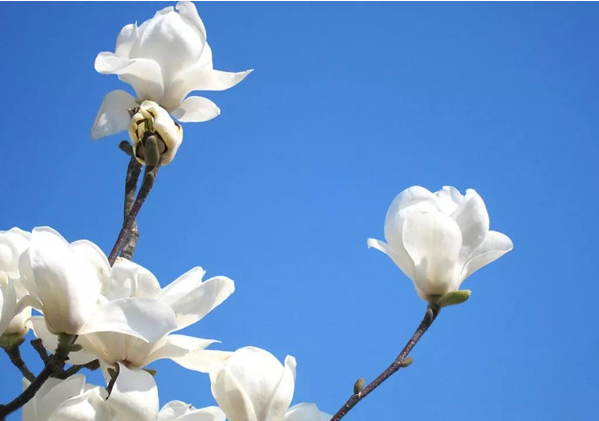Application of plant growth regulators in flowers - camellia, privet, magnolia
Time:2023-01-30 Follow:906
camellia

Camellia japonica [scientific name]
Camellia japonica, also known as Camellia japonica, Naidong, Datura stramonium, etc., belongs to the Camelliaceae, evergreen shrubs or small trees, up to 3~4m high. The single flower is opposite to the leaf axil or the top of the branch. The petals are nearly round, and the varieties can have 50 to 60 double petals. The colors of the flowers are red, white, yellow and purple.
one
Promote seed germination
The seed germination of Camellia scabra is very slow after sowing. Soaking the seed with 100mg/L gibberellin solution for 24h can promote the seed germination and seedling growth.
two
Promote rooting
Naphthyl ethyl · indole ethyl rooting powder Soak the bundled cuttings with rooting powder at a concentration of 100~300mg/L, soaking time of 2~5h, and depth of 2cm, and then cut, which can take root quickly.
IBA will circumcise the selected camellia branches at the base. Without leaving the mother plant, apply 500mg/L IBA wool cream on the circumcised part, add moss to maintain the temperature, and then wrap it with plastic film to promote rooting. After rooting, cut the branches from the mother plant and insert them into the seedbed.
three
Control flowering
Gibberellin can control the flowering of camellia varieties in the early and middle flowering period before the National Day. It can be used with 5000mg/L of gibberellin. From August 20, it can continuously drip buds for 2-3 times every 10~20 days, which can achieve satisfactory results. If certain nutrients are added to the treatment, the flower quality will be improved and the effect will be better. Different concentrations and periods can achieve different effects.
Privet

Ligustrum Lucidum Ait
It is also known as holly, wax tree and insect tree. The plant form is evergreen large shrub or small tree.
one
Promote seed germination
Gibberellin can break the dormancy of Ligustrum lucidum seeds. The seeds are soaked with 550mg/L gibberellin solution for 48h, and the water is changed once every 24h. Then the seeds are taken out and dried. After 3~5d, the seeds are soaked in water at 25~30 ℃ for 10~15d.
two
Cuttings rooting
IBA generally cuts the robust and well-organized 1-2 year-old branches of Ligustrum lucidum from mid-May to early July, removes the lower leaves, and retains 3-5 pairs of upper leaves as cuttings. The rooting rate can reach 100% and the survival rate can reach more than 90% by using 500mg/L IBA to shake and quickly dip the base of cuttings before supporting.
When the rooting powder (ABT) of indole and naphthalene was used for underpinning, the rooting powder solution of 100mg/LABT was used to soak the base of cuttings for 0.5~1h, and the immersion depth was 1~2cm, which could significantly improve the survival rate of cuttings.
three
Dwarf flower seedlings
After 7~14 days or pruning of the spring buds of Ligustrum lucidum in Japan, butyrylhydrazide can be sprayed on the leaves with 2500-5000 mg/L 40% butyrylhydrazide solution, which can inhibit plant elongation, control the growth of lateral buds, and improve plant type.
When the axillary buds of Ligustrum lucidum begin to grow in spring, or after the first manual pruning, spray the whole plant with 1000~2500mg/L bud inhibiting pill solution on the leaf surface, which can control the growth of their new shoots, promote the growth of the lateral buds at the lower part of the plant, and reduce the pruning in the later summer to make the plant type dense.
yulan

Magnolia denudate Desr
one
Promote seed germination
After soaking the seeds of Magnolia grandiflora with the mixture of 400mg/L gibberellin and 200mg/L 6-benzylaminopurine for 48h, it can effectively break the dormancy of Magnolia grandiflora and improve the germination rate of the seeds under the conditions of 50% humidity and 7-10 ℃ temperature for 56d.
two
Promote rooting of cuttings
Naphthylacetic acid (sodium) solution with a concentration of 500mg/L was quickly dipped for 15s before cutting to promote rooting.
three
Promote layering and rooting
Naphthylacetic acid (sodium) high altitude layering is a common method of propagation of Magnolia grandiflora, but the rooting rate and survival rate are often not high in practice. For this reason, after girdling, 1000mg/L of naphthylacetic acid (sodium) ethanol solution can be dipped in cotton ball to smear the girdling area to speed up rooting and improve the survival rate of transplanting.
Magnolia grandiflora has many roots and tillers, which can be propagated by layering. Applying 50mg/L naphthoic acid (sodium) to the girdling part can shorten the seedling period.
four
Improve survival rate
When NAA is used for cutting Magnolia grandiflora, the cutting propagation should be carried out in the north from June to July. The survival rate of the young tree's branches in the year is higher. The cutting is generally made of sand bed, shaded above, and sprayed with water every day for heat preservation. Generally, it can take root in 15-25 days. Soaking the base with 50mg/L naphthoic acid for 6h can improve the rooting rate.




